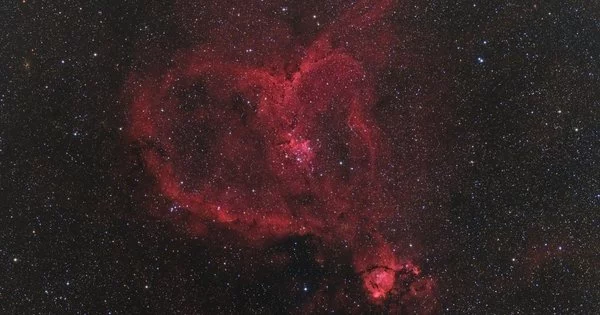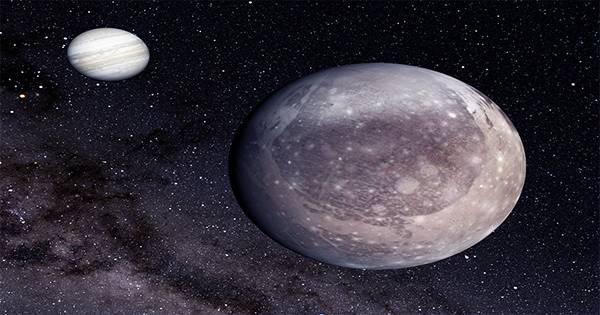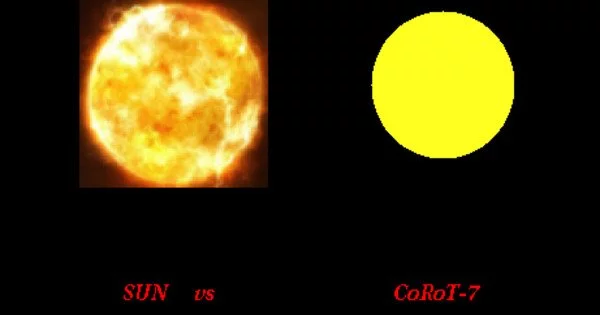The Heart Nebula, also known as IC 1805, is a large emission nebula located in the constellation Cassiopeia. It is located approximately 7,500 light-years away from Earth and spans over 200 light-years in diameter. It is an emission nebula located in the Perseus Arm of the Galaxy in the constellation Cassiopeia, 7500 light years away from Earth. William Herschel discovered it on November 3, 1787. It has ionized hydrogen gas that glows and darker dust lanes.
The nebula gets its name from its distinctive shape, which looks like a human heart when viewed from certain angles. It is a popular target for astrophotography due to its vivid colors and intricate details. Because it was the first part of the nebula to be discovered, the brightest part (a knot at its western edge) is designated as NGC 896. The radiation emitted by a small group of stars near the nebula’s center drives the nebula’s intense red output and morphology. This open cluster of stars, known as Collinder 26 or Melotte 15, contains a few bright stars nearly 50 times the mass of the Sun, and many more dim stars that are only a fraction of the Sun’s mass.
The Heart Nebula is home to a number of young, hot stars that ionize the surrounding hydrogen gas, causing it to emit light in the characteristic red color seen in the nebula. The region is also rich in dust, which absorbs light from the stars and creates dark lanes and filaments throughout the nebula.

Ionized oxygen and sulfur gasses are also present in the Heart Nebula, which accounts for the rich blue and orange colors seen in narrowband images. The nebula’s shape is determined by stellar winds generated by the hot stars in its core. The nebula also spans nearly 2 degrees across the sky, covering an area four times the size of the full moon. Overall, the Heart Nebula is a stunning example of the beauty and complexity of the universe and serves as a reminder of the vastness and wonder of the cosmos.
The Heart Nebula can be seen with a small telescope under dark skies, but it is best observed with a larger telescope and a narrowband filter that isolates the light emitted by hydrogen gas. It is a popular target for astrophotographers and amateur astronomers due to its striking appearance and interesting features.
















